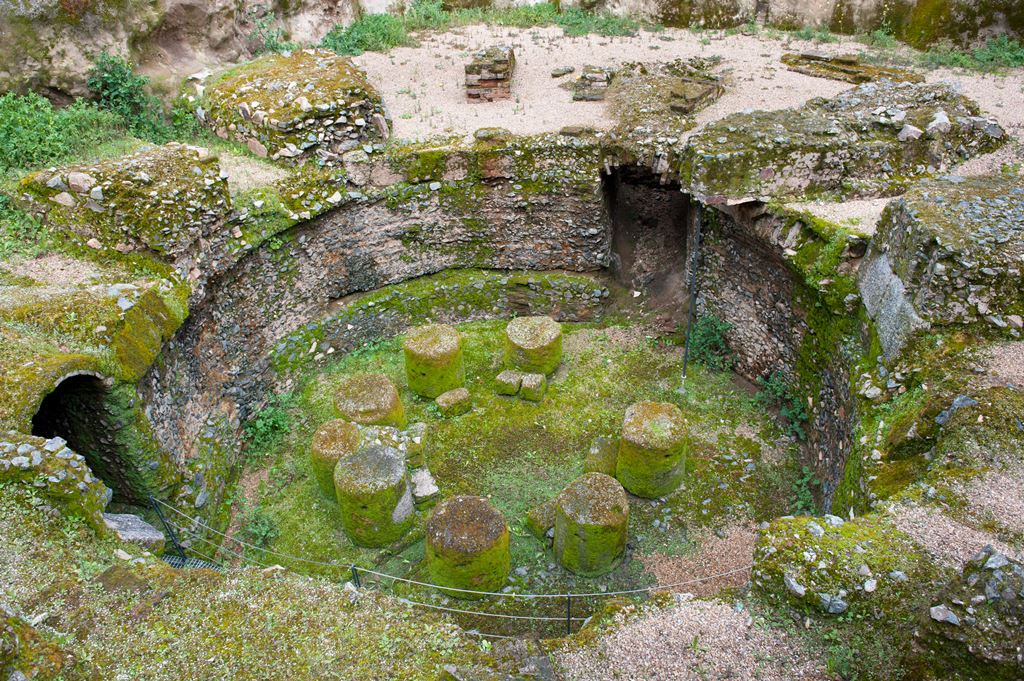Thermae/Snow Pit

In the shadows of a block of contemporary houses we find a Roman complex. Scientists have given it, since its discovery in 1920, several uses: thermae, baptistery, see of some kind of mystery religion, glass factory and even a complex to stock and distribute water.
Today everything seems to lead to the existence of a pit to preserve snow in the lower circular chamber, of the High Roman Empire, so that the rooms on the upper floor, from the 3rd or 4th century AC, could be used as thermae. It is true that, between the 7th and 9th century, there are several sources that say that these structures were used to hold the Mérida snow pit.

In the shadows of a block of contemporary houses we find a Roman complex. Scientists have given it, since its discovery in 1920, several uses: thermae, baptistery, see of some kind of mystery religion, glass factory and even a complex to stock and distribute water.
Today everything seems to lead to the existence of a pit to preserve snow in the lower circular chamber, of the High Roman Empire, so that the rooms on the upper floor, from the 3rd or 4th century AC, could be used as thermae. It is true that, between the 7th and 9th century, there are several sources that say that these structures were used to hold the Mérida snow pit.
Hours and Fees
Location





